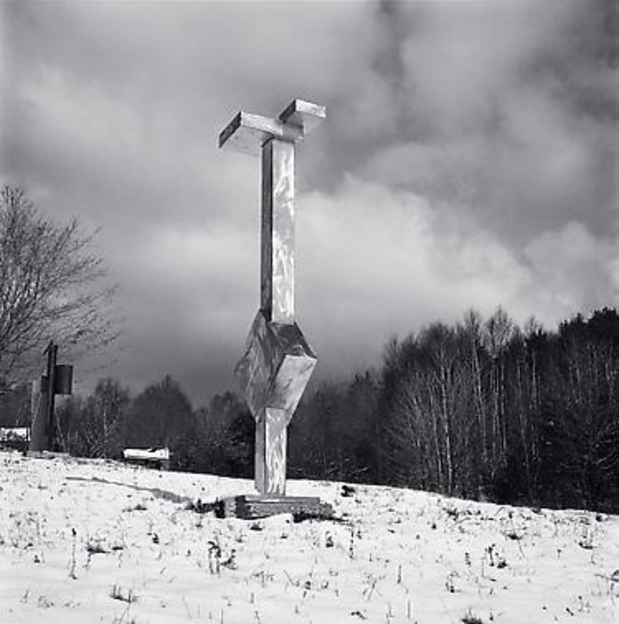David Smith Exhibition
Gagosian Gallery 24th Street

This event has ended.
Sometimes when I start a sculpture, I begin with only a realized part, the rest is travel to be unfolded much in the order of a dream. The conflict for realization is what makes art not its certainty, nor its technique or material.
--David Smith
Gagosian Gallery presents an exhibition of monumental sculptures by David Smith made between 1962-1964.
A pioneer of modernist twentieth-century American sculpture, Smith created these works during periods of intense production in Voltri, Italy, and at his workshop in Bolton Landing, New York. Beginning in 1952, he increasingly conceived his sculptures as distinct bodies of works that shared a thematic basis or a common material. Often he worked on several such series simultaneously, insisting that each grouping be understood as continuous parts of his concept rather than as variations on a theme. The monumentality of the Voltri, Cubi, Primo Piano, and Gondola series reflects Smith's ambition to create sculptures on a scale with the expansive rolling fields surrounding his home and studio at Bolton Landing.
In Voltri XVII (1962) and VB XVII (1963) Smith continued his practice of incorporating found objects and materials into sculptures that marry industrial processes with forms inspired by natural phenomena, such as clouds and mountains. In 1962, he was invited to participate in the "Festival of Two Worlds" in Spoleto, Italy. Working at a decommissioned steel factory in nearby Voltri, he created an astonishing twenty-seven sculptures in just thirty days. The surplus metal was then shipped to Bolton Landing where it became the raw material for the sculptures that comprise the subsequent Voltri-Bolton series: VB, Voltron and Voltri-Bolton.
Cubi II (1962) belongs to the ambitious Cubi series (1961-1965), in which Smith configured elemental, geometric, stainless steel modules into towering sculptures that evoke associations with the human body and architecture. Conceived to be installed outdoors, the Cubis absorb and reflect the varying light conditions and color of their environment, producing tonal contrasts that are painterly in nature.
Smith also continued to explore dissolving the distinction between two and three-dimensional works by painting many of his steel sculptures. In Gondola II (1964), solid planes of dark blue, black and cream function as pictorial and structural elements that seem to recede and advance with subtle authority. The title refers directly to the machine used to lift and position the large steel planes that compose this work. In contrast, the painted white surface of Primo Piano II (1962) unifies its various abstract components, reading as entirely negative space when viewed against the colored backdrop of a landscape environment. Both sculptures move beyond "drawing in space" to become "painting in space" on a grand scale and they contain strikingly disparate perspectives: when viewed from front or back, their volumes are reduced to planes, and when viewed from the side, these same volumes form almost linear profiles.
The five works selected from the major series that Smith was working on at the time of his premature death give a concise indication of the depth and range of his vision, and draw the viewer into the poetic relationships between form and space that unify his diverse oeuvre.
[Image: David Smith "Cubi II" (1962) Stainless steel, 130 1/2 x 36 7/8 x 23 7/8 in.]
Media
Schedule
from February 26, 2010 to April 10, 2010
Opening Reception on 2010-02-26 from 18:00 to 20:00